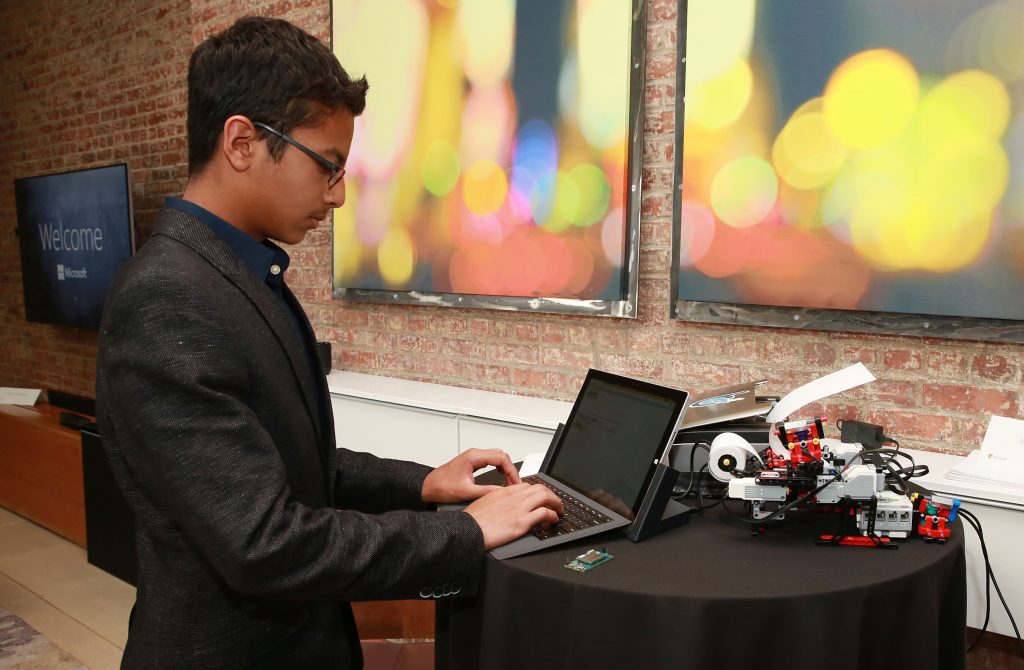“I discovered that typical Braille printers cost about $2,000 or even more, and I felt that was unnecessarily expensive for someone already at a disadvantage,” Shubham said. “So I put my brain to work, and the first thing that came to mind was to create an alternative using my favorite toy.”
Shubham combined his love of Legos with his passion for technology and invented a low-cost Braille printer, powered by Windows and his Microsoft Surface Pro 3. After much trial and error — “I had to build and break seven different models” — Shubham finally had a working Braille printer, which he named the Braigo, a mashup of Braille and Lego. The first Braigo cost $350, and Shubham made DIY instructions available online to anyone who wants to build their own.
“I achieved an 82 percent reduction in cost and have been overwhelmed by the encouraging feedback from both the sighted and the blind,” he said.
Much of the feedback he received was the demand for a ready-made consumer version of the Braigo, so Shubham began working on the Braigo 2.0, using Intel’s new Edison Chip. With Windows and his Surface Pro 3, he could easily make updates to the program whether he was on the road giving demos or at home prepping for his school’s science fair.
The Braigo 2.0 was hailed as the first low-cost, IoT-enabled, silent and lightweight Braille printer. Following on the Braigo 2.0’s success, Shubham, who was only 12 years old at the time, became the youngest entrepreneur ever to receive venture capital funding when Intel Capital invested in his startup, Braigo Labs.
Now Shubham is working to bring the Braigo 2.0 to market. He’s started working with my colleagues on the Windows team to integrate Braigo drivers with Windows for easy deployment.
“Our relationship with Microsoft will help Braigo achieve a seamless experience for a visually impaired person who wants to use a computer at home or at the office to print documents for offline reading,” he said. “Also, think about the banks, the government institutions or even the libraries where Windows-based computers are widely used. They will all benefit from having a Braigo to provide accessibility services to their visually impaired customers.”
It’s great to see all that Shubham has accomplished by age 13 — and he’s still in middle school. Imagine where technology will take him — or where he will take us — by the time he graduates high school!
Shubham is proof that coding skills can help young people can take their big ideas to the next level. Through the Microsoft YouthSpark initiative, we’re working to empower young people like Shubham all around the world with computer science education to fuel their passions today and get ahead in the future. Free tutorials, camps and resources for students and parents are available on the Microsoft YouthSpark Hub.

